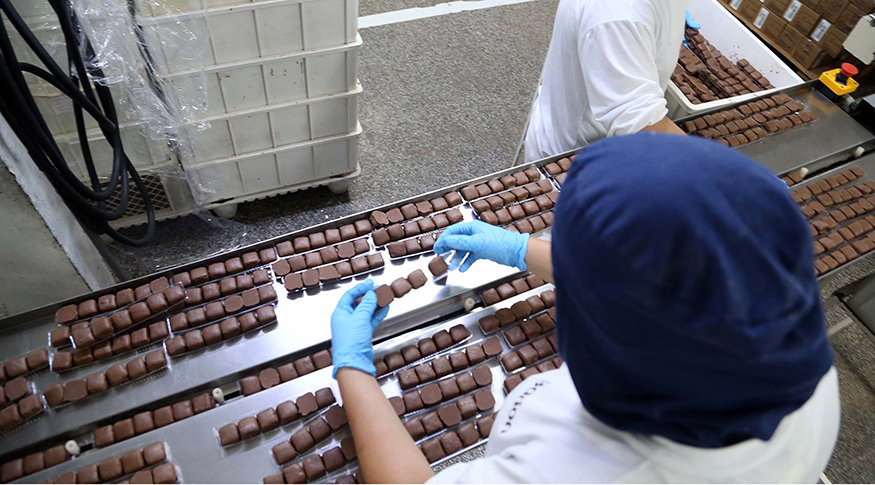Domestic industry
National industry advances 0.9% in March
May 03, 2024 09h00 AM | Last Updated: May 03, 2024 05h05 PM

Brazilian industrial production grew 0.9% from February to March. The gain in pace follows the 0.1% change seen in the previous month. In relation to March 2023, the industry had a 2.8% drop in its production. In the year, it accumulated an increase of 1.9% and, in 12 months, a positive change of 0.7%. With these results, the industry is 0.4% above the pre-pandemic level (February 2020) and 16.3% below the peak of the time series, obtained in May 2011. The data are from the Monthly Survey of Industry (PIM - Brazil), released today (3) by the IBGE.
“The positive performance of the industry in the last two months does not eliminate the drop recorded in January, but it is an improvement in behavior. In March, growth was concentrated in a few activities, with only five of them showing expansion. There was, therefore, a change in relation to the dynamics seen in January and February, when there was a predominance of positive rates among the activities surveyed”, analyzes PIM manager André Macedo. He also highlights the gain in pace seen at the end of the first quarter of 2024, as the last quarter of 2023 recorded growth of 1.1%.
From February to March, two of the four broad economic categories and only five of the 25 industrial sectors surveyed showed an increase in production. The main positive influences came from food products (1.0%), textile products (4.5%), printing and reproduction of recorded media (8.2%) and mining and quarrying industries (0.2%).
Responsible for the biggest positive impact on this month's result, the food products sector recorded the second consecutive month of expansion in production, a period in which it accumulated a gain of 1.1%. “The behavior of the food products sector was similar to that of the industry in general, with a drop in January, followed by growth in the following two months. It is a segment that is 7.3% above the pre-pandemic level. In March, the result can be explained mainly by meat in general and sugar”, explains Mr. Macedo.
The textile products segment (4.5%), in turn, also had the second positive result in a row, with a cumulative growth of 8.9%. However, the sector is still 11.0% away from pre-pandemic levels. The activity came from three negative results in a row (January/2024, December/2023 and November/2023).
In the case of printing and reproduction of recorded media (8.2%), there was a resumption of growth after a decline of 1.8% in February. This segment is characterized by high volatility, being 8.5% above the pre-pandemic level.
The mining and quarrying industries sector (0.2%), after presenting negative rates in January and February, returned to positive performance in March. The greater extraction of iron ore was decisive for the results of this segment.
In the opposite direction, among the 20 activities that showed a decline in production, motor vehicles, trailers and bodies (-6.0%) and computer equipment, electronic and optical products (-13.3%) exerted the main impacts in March 2024, with both interrupting three consecutive months of production growth, a period in which they accumulated advances of 14.3% and 39.5%, respectively.
There were also significant declines in the sectors of chemical products (-2.0%), basic metals (-2.6%), pulp, paper and paper products (-2.8%), miscellaneous products (-9.7%) , beverages (-3.3%), leather, travel articles and footwear (-6.0%), wearing apparel and accessories (-4.5%), non-metallic mineral products (-3.2 %), coke, petroleum products and biofuels (-0.6%) and metal products (-2.6%).
In relation to broad economic categories, still in comparison with February, the sectors of intermediate goods (1.2%) and semi- and non-durable consumer goods (0.9%) showed positive rates. Durable consumer goods (-4.2%) and capital goods (-2.8%) recorded reductions in March. While the first interrupted three consecutive months of expansion, a period in which it accumulated gains of 11.3%, the second eliminated part of the 14.7% growth accumulated in two consecutive months of advances in production.
Industrial activity falls 2.8% year-on-year
Compared to March 2023, the industry fell 2.8%, with negative results in 17 of the 25 sectors surveyed. The main negative influences came from chemical products (-8.1%), machinery and equipment (-12.9%), pharmochemical and pharmaceutical products (-15.6%), motor vehicles, trailers and bodies (-6.4 %) and computer equipment, electronic and optical products (-16.1%).
The sectors of clothing and accessories manufacturing (-11.1%), metal products (-5.3%), basic metals (-3.2%), food products (-1.1%) , miscellaneous products (-13.1%), maintenance, repair and installation of machinery and equipment (-9.1%), leather articles, travel items and footwear (-7.9%) and furniture (-7.0%) also contributed negatively to the resulted.
“This 2.8% drop needs to be put into perspective due to the calendar effect. In 2024, March (20) had three fewer working days than the same month in the previous year (23). This directly impacts industrial production”, highlights PIM manager.
Among the highs, coke, petroleum products and biofuels (2.8%) and mining and quarrying industries (1.6%) were responsible for the biggest positive influences.
It is also worth highlighting the positive results of the pulp, paper and paper products sectors (4.2%) and other transportation equipment (7.7%).
More about the survey
PIM Brasil has been producing short-term indicators since the 1970s, relating to the behavior of the real product of the mining and quarrying and manufacturing industries. As of March 2023, the publication of the new series of monthly industrial production indices began, after reformulation to update the sample of activities, products and respondents; to develop a new index weighting structure based on the most recent industrial statistics; to update the survey reference year; and to include new Federation Units in the dissemination of regional survey results. These methodological changes are necessary and seek to incorporate economic changes in society.
The next release, for April 2024, will be on June 5th. The survey results can also be consulted in the Sidra database.




















